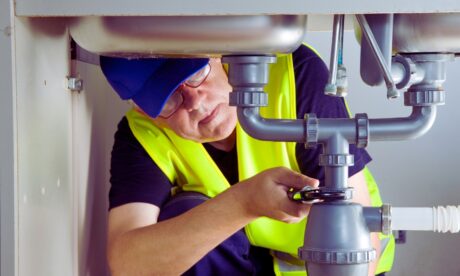Electricians don’t just wire homes — they make buildings work. They bring power, safety, and structure to modern life.
If you’re thinking about how to get started as an electrician, here’s the truth: You need proper training, real experience, and verified certification. You won’t find shortcuts, but you will find a pathway — one that builds real skills, earns respect, and leads to long-term work. This guide gives you the full picture.
Step One: Understand How to Get Started as an Electrician
This job isn’t for hobbyists or guesswork. It’s a skilled profession with real consequences — and real pride.
Before anything else, you’ll need a solid base. That means GCSEs — usually Maths and English — at grades 9–4. These aren’t just boxes to tick. You’ll use those skills daily, calculating loads or writing reports. If you missed those grades, Functional Skills Level 2 can get you through the door.
You also need to be at least 16. But this trade welcomes adults too. Many qualified sparks retrained in their thirties, forties, or even later. If you’re serious about the work, the age doesn’t matter.
Reflect: This is a profession, not a fallback. Start strong, and the rest builds from there.
Choose Your Training Path: College or Apprenticeship
Becoming an electrician isn’t quick, and it shouldn’t be. But if you value autonomy, precision, and meaningful work, it’s one of the most rewarding careers you can build.
Most new electricians take one of two routes. Apprenticeships mix work and learning. You join a company, train on-site, and study at college part-time. It’s paid and takes about four years. You’ll install real systems, follow working electricians, and get your first true taste of the job.
If you don’t land an apprenticeship right away, a college course gets you started. You begin with a Level 2 diploma. Then you move to Level 3. These build your knowledge of science, safety, and systems.
College is theory-first. You’ll still need real job experience to become fully qualified. Many college students later take assistant roles to gain that practical side.
Consider: Choose based on your situation. Both paths require effort, patience, and a strong work ethic.
Learning the Work: What Every Trainee Electrician Should Know
Every wire you run and every test you perform has a reason. You’re not just connecting circuits — you’re building safe, functioning systems.
Whether in college or on the job, you’ll cover:
- Circuit theory and electrical science
- Installation methods for lighting and power
- Testing and inspecting your work
- Safe isolation techniques
- Cable containment and sizing
- Understanding building regulations and wiring standards
You’ll also study BS 7671 — the IET Wiring Regulations. This isn’t just textbook knowledge. It guides your daily decisions and keeps your installs legal and safe.
Pride point: Electricians deal in precision. Every measurement, every connection, every test counts.
Get Hands-On: Why Site Experience Matters Most
No classroom can match real job experience. You learn the rhythm of the trade by working under pressure, around other trades, and in real spaces.
Most trainees begin as an electrician’s mate or junior installer. You’ll shadow a qualified spark. You’ll run cables, fix fittings, and learn how sites operate. It’s hard work — but it builds real confidence.
Your site experience contributes to your NVQ portfolio. You’ll collect evidence: photos, notes, supervisor reviews. These prove your capability. This portfolio is the heart of your Level 3 qualification.
Reminder: You earn your stripes through effort. No one hands out titles — you build them with your work.
Final Steps: NVQ Level 3 and the AM2 Assessment
When you’ve built enough site experience, it’s time to prove your skill formally. You do that through your NVQ Level 3 and the AM2 test.
The NVQ captures your work. Your assessor reviews it. They confirm that you can install, inspect, and maintain electrical systems to national standards.
The AM2 is your final assessment. It’s a controlled test, usually over a few days. You’ll install systems from scratch, identify faults, test circuits, and explain your work. It’s strict and practical.
Once you pass, you’re a fully qualified installation electrician.
Hold this thought: The AM2 doesn’t test theory. It checks that you can work safely, consistently, and without supervision.
Already Working? The Experienced Worker Assessment (EWA)
If you’ve spent years doing the job without the papers, there’s still a path forward.
The Experienced Worker Assessment recognises your on-the-job learning. If you’ve worked across different installations and hold some prior qualifications, this is worth exploring.
The EWA requires you to:
- Complete a knowledge scan
- Build a full portfolio of evidence
- Pass the AM2E (similar to the standard AM2)
After you pass, you qualify for the ECS Gold Card. That card opens doors — both on job sites and in professional networks.
Respect the craft: This route doesn’t skip steps. It validates hard-won experience with formal recognition.
Domestic-Only Work: The Installer Route
Some electricians choose to specialise in home installations only. For that, there’s the domestic installer route.
These courses focus on home systems — sockets, lighting, consumer units — and the Part P building regulations. They run for several weeks and cover safe installs, inspection, and testing.
After qualifying, you register with a Competent Person Scheme like NICEIC or NAPIT. That lets you self-certify domestic work.
It’s a solid option if you want to run a home-focused business. But it won’t qualify you for commercial or industrial jobs.
Be clear: This is a narrow path. Choose it only if you know your career will stay domestic.
Get Certified: Cards and Credentials That Matter
Once qualified, your paperwork proves it. The most important credential is the ECS Gold Card. It shows you meet national standards and can work independently.
To apply, you need:
- NVQ Level 3 (or EWA equivalent)
- City & Guilds 2382 (18th Edition Wiring Regs)
- ECS Health, Safety & Environment Test pass
This card is more than plastic. It gives you access to sites, contracts, and respect.
Know this: In this trade, credibility isn’t claimed — it’s earned, documented, and displayed.
Self-Certify with a Competent Person Scheme
To legally sign off your own work, you need to join a scheme like NICEIC or NAPIT.
These organisations assess your work, your knowledge, and your systems. They make sure you meet wiring regulations and can manage projects responsibly. They also require insurance and continued training.
From 2025, these schemes will also check your CPD — your record of learning and updates.
Take pride: Registration isn’t just about legality. It signals professionalism and pride in your work.
Career Progression: Where Can This Trade Take You?
Electricians don’t just fix lights. They lead teams, manage projects, design systems, and build businesses.
Once qualified, you can:
- Become a site supervisor or contracts manager
- Move into estimating and bidding
- Teach or assess the next generation
- Start your own company
- Specialise in renewables, smart homes, or industrial systems
Reflect again: A qualified electrician owns a versatile skillset — one that creates long-term value and options.
Advanced Areas to Specialise In
As buildings and technology evolve, the trade expands. Many electricians find their niche in:
- Solar and battery storage
- EV charging systems
- Fire and security installs
- Smart homes and automation
- Commercial networking and data
- Building energy systems
These paths often require short courses or manufacturer training. But they set you apart — and increase your rates.
Build depth: Skill earns pay. Specialism earns trust.
Keep Learning: Continuous Professional Development (CPD)
Staying current matters. Wiring regulations change. Tools improve. Expectations grow. That’s where CPD comes in.
Professional electricians log hours every year updating their skills. This might mean taking short courses, attending events, or reading trade material.
Schemes like NICEIC will soon require CPD logs. More clients will expect it too.
Respect yourself and your trade: The best sparks never stop learning.
Final Thoughts: A Trade That Builds More Than Circuits
If you’ve read this far, you’re not looking for a shortcut. You’re looking for a profession. A way to do real, visible work that keeps homes, schools, and businesses running.
This trade isn’t for show. It’s for people who value precision, service, and skill.
How to get started as an electrician? You commit. You train. You show up on time and stay until the job’s done right. And over time, you don’t just build systems you build a reputation. Enrol in our Electrician Course at School of Healthcare and build your skills the right way.



